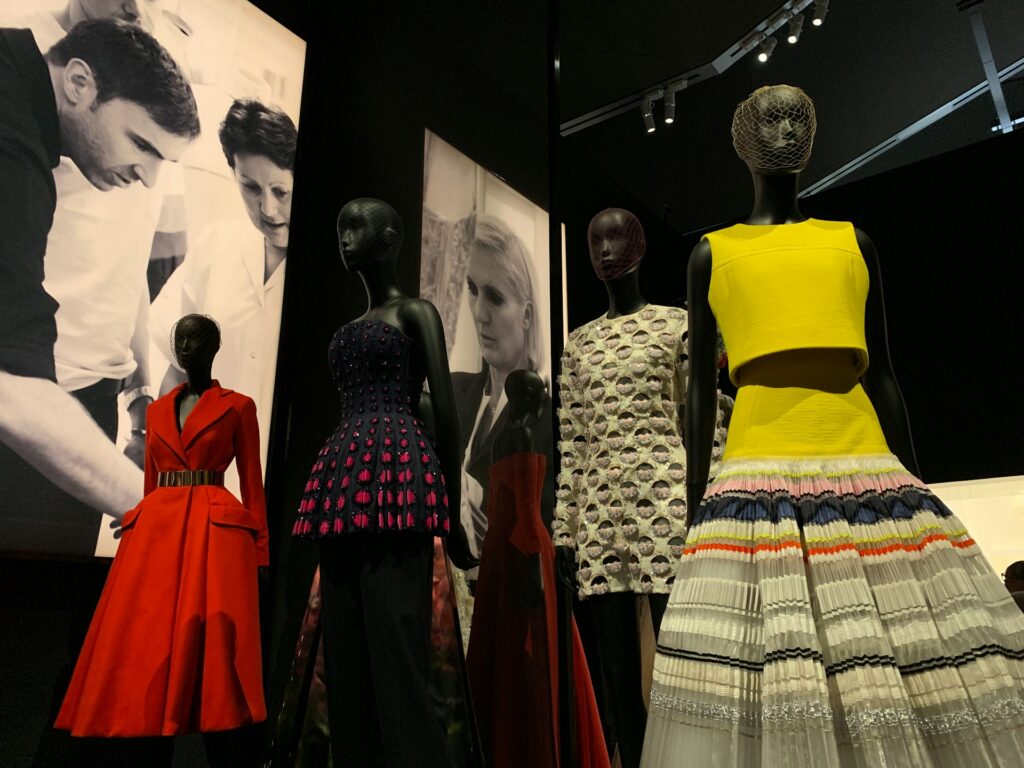Introduction: Fashion design is the dynamic process of creating apparel and accessories that reflect cultural influences, individual expression, and societal trends. It encompasses a wide array of styles, from haute couture to streetwear, each telling a unique story about its designer and wearer.
Defining Fashion Design
Fashion design involves conceptualizing, sketching, and constructing garments and accessories, considering elements such as fabric, color, silhouette, and functionality. It merges artistry with functionality, balancing aesthetics with wearability.
Relevance and Importance
Fashion design plays a pivotal role in shaping personal identity and cultural narratives. It reflects the zeitgeist of each era while pushing boundaries and challenging norms. Moreover, the fashion industry contributes significantly to the global economy, driving innovation and employment opportunities.
Fashion History
To understand the present and envision the future of fashion design, we must first explore its rich history, marked by artistic revolutions, social movements, and technological advancements.
Early Influences
Fashion has been a part of human civilization since ancient times, with evidence of elaborate clothing and accessories dating back thousands of years. Civilizations such as Ancient Egypt, Greece, and Rome laid the groundwork for sartorial expression, showcasing intricate textiles and symbolic adornments.
Renaissance and Enlightenment
The Renaissance era witnessed a resurgence of interest in art, culture, and fashion, leading to the emergence of luxurious fabrics, elaborate garments, and the concept of fashion as a status symbol. During the Enlightenment, rationalism and individualism influenced fashion, paving the way for simpler, more practical attire.
Industrial Revolution
The Industrial Revolution transformed fashion production, ushering in an era of mass manufacturing and standardized sizing. This period saw the rise of fashion houses, department stores, and ready-to-wear clothing, making fashion more accessible to the masses.
20th Century Innovations
The 20th century witnessed rapid changes in fashion, driven by technological innovations, social upheavals, and cultural shifts. From the flapper dresses of the 1920s to the minimalist aesthetic of the 1990s, each decade left its mark on fashion, reflecting changing attitudes and values.
Contemporary Trends
In the 21st century, fashion design continues to evolve, influenced by globalization, digitalization, and sustainability. Designers draw inspiration from diverse sources, blending traditional craftsmanship with cutting-edge techniques to create garments that resonate with modern consumers.
Key Designers and Brands
In the ever-expanding landscape of fashion design, certain individuals and brands have left an indelible mark, shaping trends and redefining industry standards.
Coco Chanel
Coco Chanel revolutionized women’s fashion in the early 20th century, introducing timeless classics such as the little black dress, the Chanel suit, and the quilted handbag. Her designs epitomized elegance, simplicity, and sophistication, challenging conventional notions of femininity.
Christian Dior
Christian Dior’s New Look, unveiled in 1947, marked a return to opulence and femininity after the austerity of World War II. With its nipped-in waistlines, full skirts, and luxurious fabrics, the New Look captured the imagination of post-war consumers, cementing Dior’s status as a visionary couturier.
Gianni Versace
Gianni Versace, known for his bold prints, vibrant colors, and provocative designs, revolutionized fashion in the 1980s and 1990s. His eponymous label, Versace, became synonymous with excess and glamour, attracting celebrities and fashion enthusiasts worldwide.
Rei Kawakubo
Rei Kawakubo, the visionary behind the avant-garde label Comme des Garçons, has consistently challenged the norms of fashion with her experimental designs and unconventional silhouettes. Her work blurs the boundaries between fashion and art, inspiring generations of designers to think outside the box.
Stella McCartney
Stella McCartney is a trailblazer in sustainable fashion, advocating for ethical practices and eco-friendly materials. Her eponymous label prioritizes animal welfare and environmental conservation, proving that style and sustainability can coexist harmoniously.
Fashion Shows and Events
Fashion shows and events serve as platforms for designers to showcase their latest collections and make a statement on the runway. From haute couture presentations in Paris to streetwear showcases in Tokyo, these events capture the essence of each season’s trends and innovations.
Trend Analysis
Analyzing fashion trends involves observing consumer behavior, monitoring social media, and staying attuned to cultural shifts. From color forecasts to silhouette predictions, trend analysis helps designers anticipate market demands and stay ahead of the curve.
Style Tips
When it comes to personal style, confidence is key. Experiment with different looks, mix and match pieces from various sources, and don’t be afraid to express your individuality. Remember, fashion is about self-expression and creativity.
Sustainability in Fashion
As awareness of environmental issues grows, the fashion industry is embracing sustainable practices, from eco-friendly materials to ethical production methods. By choosing sustainable fashion options, consumers can reduce their carbon footprint and support responsible brands.
Technology in Fashion
Technology is revolutionizing the fashion industry, from 3D printing and virtual fitting rooms to blockchain technology and AI-driven design tools. These innovations are streamlining production processes, enhancing customization options, and creating new opportunities for creativity.
Celebrity and Cultural Impact
Celebrities wield immense influence in the world of fashion, shaping trends and setting style standards through their red carpet appearances, social media posts, and collaborations with designers. From iconic moments on the Met Gala to viral street style looks, celebrities leave a lasting impression on fashion culture.
Conclusion
Fashion design is a dynamic and multifaceted field that continues to evolve with each passing season. From its rich history to its innovative future, fashion design reflects the spirit of creativity, diversity, and expression. As we navigate the ever-changing landscape of fashion, let us celebrate its power to inspire, empower, and unite.

